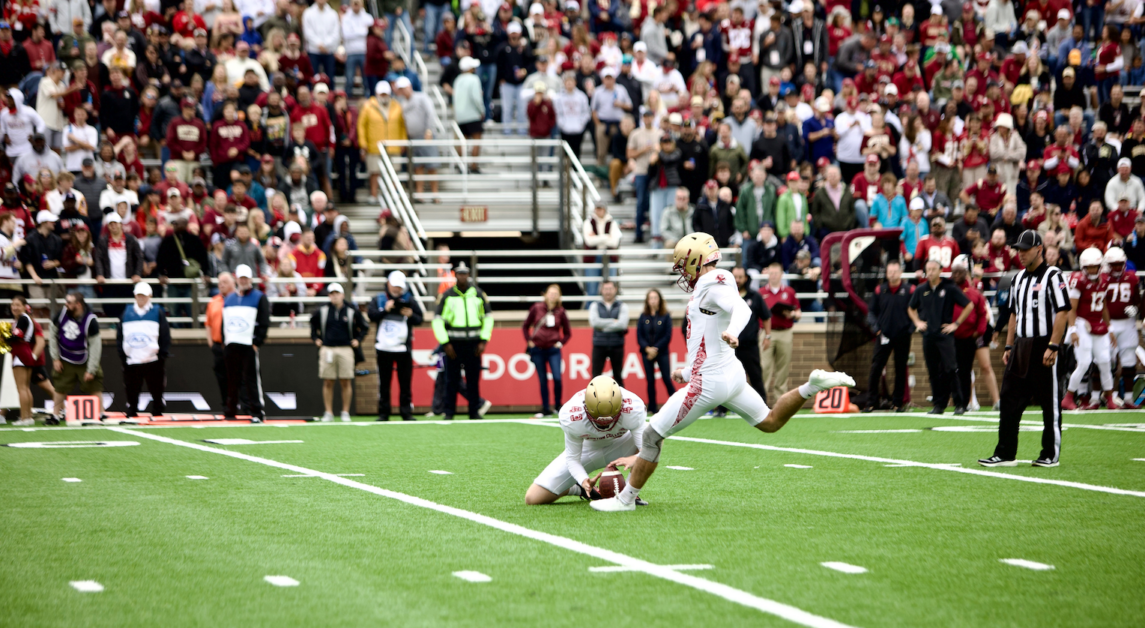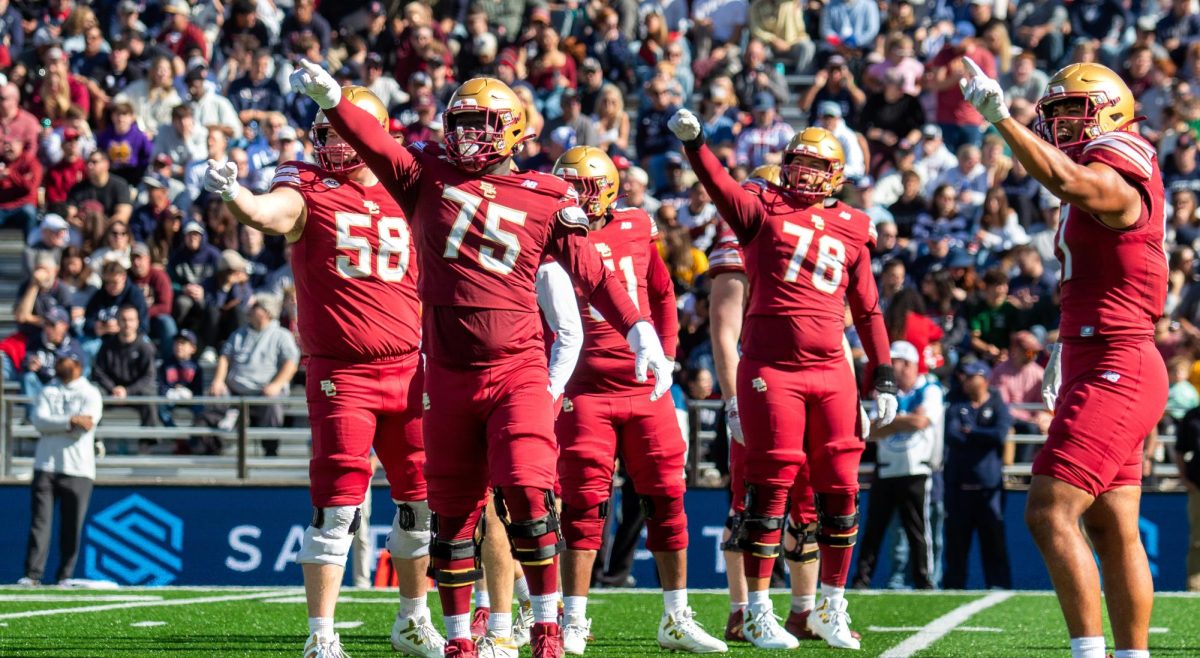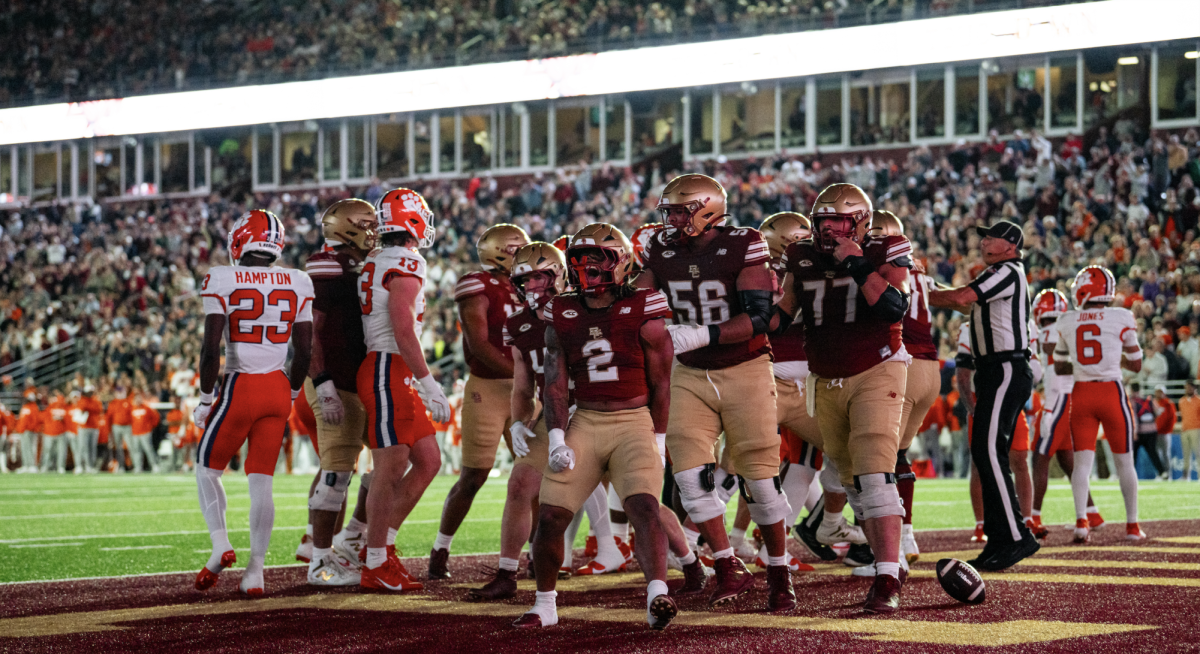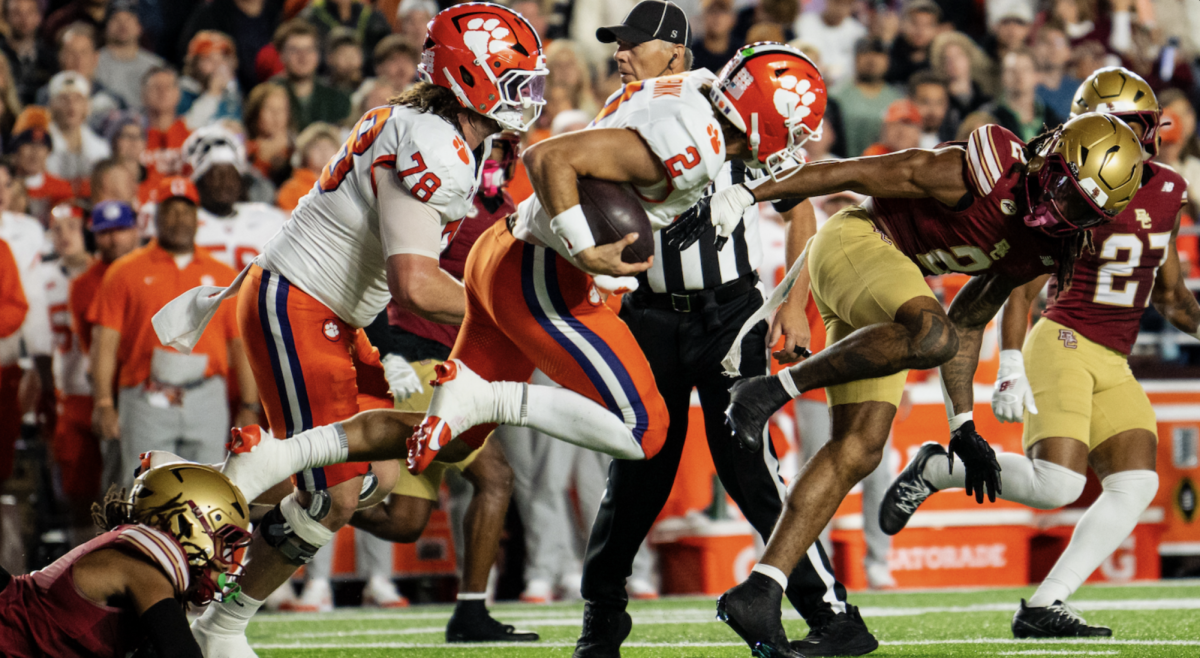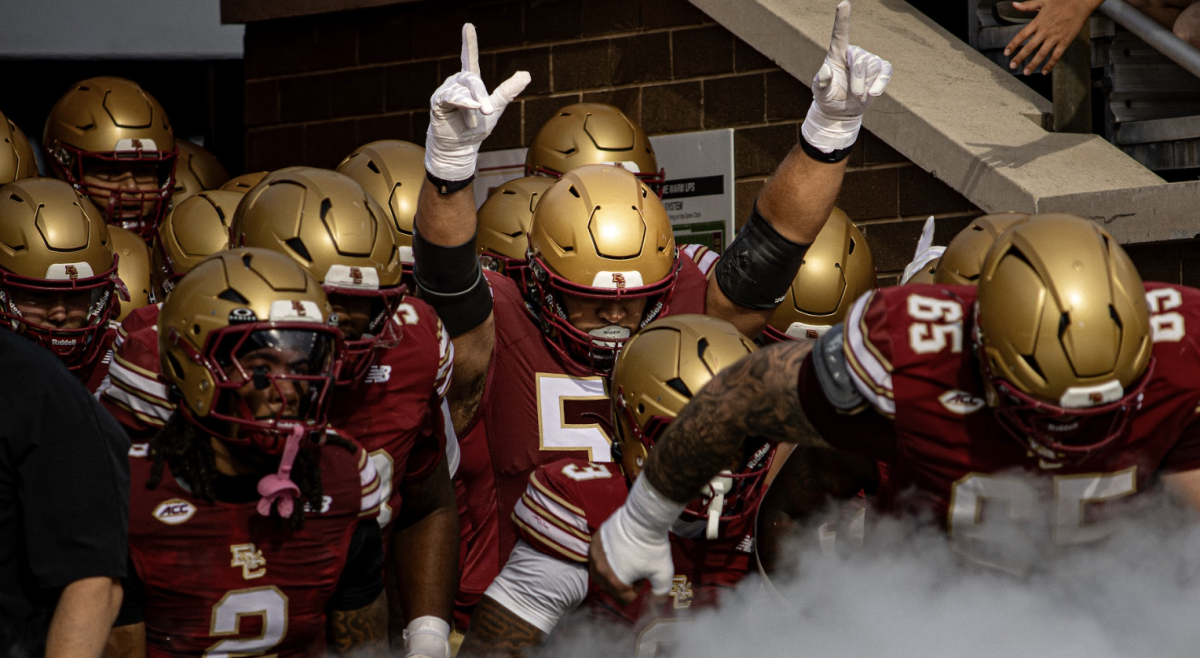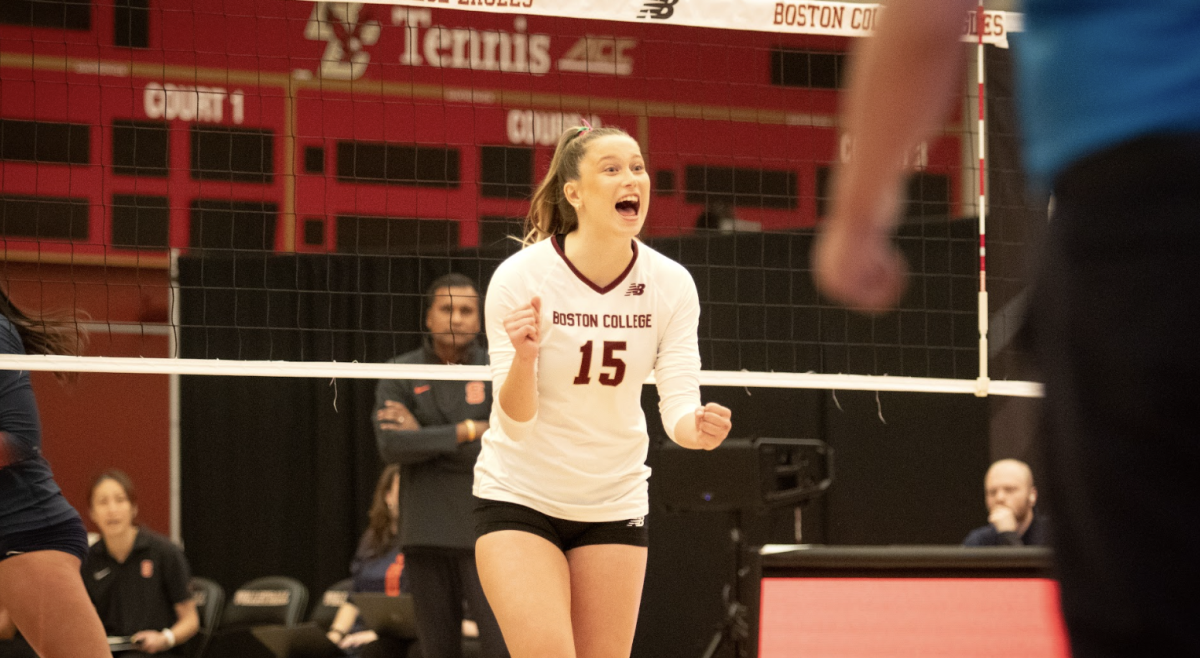Regression to the mean is exactly how Boston College football is setting itself up to end the 2023 season.
After starting 1–3 and then managing to scrape out five wins in a row from Week Five to Week 10, the Eagles are back to slumping to their mean, and what BC head coach Jeff Hafley will start to become infamous for in Chestnut Hill, Mass.—the head-scratching six-win season.
It didn’t take long for BC to show its true colors after a dizzying loss to Virginia Tech on Nov. 11, in which its defense gave up 600 total yards and six touchdowns. Next on the list was Pittsburgh, which boasted the worst offense in the ACC, a first-time, third-string signal caller, and a 2–8 record. That was too much for the Eagles to overcome, too, as BC lost 24–16 while giving up another 404 yards of total offense—that’s over 1,000 yards lost in two straight weeks to two teams with losing records.
BC quarterback Thomas Castellanos, who still has a shot at becoming BC’s 25th 1,000-yard rusher of all time, has thrown only one less interception in the past two games as he did during the entire five-game winning stretch and has totaled 11 interceptions on the year compared to just 10 touchdown passes.
Significant losses due to injuries have played a part in this fall to the mean, but this is not the same team that held then-No. 3 Florida State to two points on Sept. 16 and clowned Georgia Tech as the visitor on Oct. 21. And despite the fact that BC controlled possession of the football for nearly 10 minutes longer than the Panthers did—an approach Hafley has utilized all season long—finishing in the red zone has not been successful since playing the Yellow Jackets.
Here are four observations from the loss.
Pass Protection Failure
For a team that ranks first in the ACC in rushing yards, rushing yards per game, and rushing attempts, it’s quite a surprise to see how porous BC’s offensive line is when it comes to pass protection. Whether it looks that way because of Castellanos’ inexperience as a college starter or because of the offensive line’s inability to block in the pass arena—especially on the edges—is unclear. But it’s becoming a serious problem either way, and Castellanos’ passing numbers speak to that.
On countless occasions, Castellanos was forced to scramble out of the pocket because it was collapsing, mostly from the outside tackles where Pitt edge rushers charged through effortlessly.
Going back to the first quarter on BC’s first offensive drive, the Eagles faced 2nd-and-9 from Pitt’s 23-yard line. Seconds after the snap, the Panthers brought a heavy rush with two linebackers charging at Castellanos from outside angles and two defenders flanking to Kye Robichaux, the intended receiver, on a screen. Robichaux was swallowed up, and BC had to kick a field goal because of the lost yards.
On 3rd-and-8 with 2:50 remaining in the first quarter, BC featured an empty set with three receivers to Castellanos’ right and one to his left. Castellanos took the snap, checked his reads, and started to pounce forward before crashing into an edge defender, practically sacking himself.
And on the Eagles’ second-to-last offensive drive of the game, Castellanos faced 3rd-and-9 with 3:07 left, and two edge rushers immediately sank into both sides of his field of vision. Castellanos tried to connect with Lewis Bond on a wideout screen, but Pitt’s Dayon Hayes jumped and tipped the signal caller’s pass back into the hands of Castellanos himself, who got sacked again.
BC’s final drive of the game showcased a series of conundrums where pressure from the outside on pass plays backed up the offense over and over again. The Eagles were eventually confronted with a 4th-and-20 on their final offensive play of the game, and Castellanos threw an interception—his second of the game.
Overall, BC got sacked six times for a loss of 40 yards. The Eagles’ defense, meanwhile, didn’t rack up a single one.
Unless Castellanos can release his throws just one or two seconds into the play, this issue will continue to arise. If he doesn’t learn to either step into the pocket to make throws rather than force a scramble, or if the offensive line doesn’t grow in terms of learning how to handle exterior pressure, the problems will continue. It simply looks like the tackles are too slow to contain it.
Nice to Have You Back, Kye
On the flip side, running right through the heart of defenses has worked significantly for the Eagles, thanks in large part to Robichaux. Having the junior running back healthy again after he missed a game due to an injury he sustained against Syracuse proved just how sturdy the guard positions are—which includes projected first-rounder Christian Mahogany—and how this should be BC’s primary way of gaining yards downfield.
Robichaux managed 118 rushing yards on an average of 4.9 yards per carry and didn’t lose a single yard on the ground on 24 attempts.
Liam Connor Masterclass
When Hafley iced his own kicker in the final quarter of the game, things seemed to be working backwards for BC. But kicker Liam Connor didn’t let the untimely timeout get into his head after nailing a 33-yarder with just over five minutes left to play, which was nullified because of his own coach’s decision.
Instead, Connor stood back up in the same exact position on fourth-and-goal and dialed in. Connor perfectly nudged the football through the uprights at Acrisure Stadium to pull the Eagles within one point of Pitt at 17–16.
Earlier in the affair, Connor drilled a 42-yard attempt to hand BC a 3–0 lead with 8:46 left in the first quarter, and there was no doubt about whether it would go in or not. Connor sailed his kick high into the uprights with plenty of leg, and the field goal landed right into the hands of a Pitt equipment manager standing right behind the center of the posts.
Connor made another field goal with just 26 seconds left in the first half, converting from 45 yards out.
The Leominster, Mass. native is now 10 for 12 on the season after his perfect night against the Panthers, and the lack of fan attendance at Pitt probably helped in that respect.
Which “Football” Is BC Playing?
If you looked through a football rulebook and found the targeting section, a frame of Khari Johnson’s vicious collision with tight end Malcolm Epps would likely be in it.
Johnson, a BC defensive back who is learning the ropes of Hafley’s system more and more with increased playing time, didn’t intend to do anything malicious, according to Hafley. But he could’ve easily ended Epps’ career with his attempt to use his head as a means of either knocking the football down on a deep pass or knocking the player out.
It looked as if he went up for a header in the other type of football—soccer as we like to call it in America—and it even made waves in national news for how atrocious the hit was.
Beyond Johnson’s egregious mistake, BC went back to its old ways, registering eight penalties in the game for a loss of 55 yards, something it hasn’t necessarily done to that extent since picking up 18 penalties against the Seminoles.
There’s so much that the players can be blamed for in a game like this, especially on BC’s side. But penalties are one thing that almost certainly project on the coach, and more discipline needs to come for BC’s squad.

